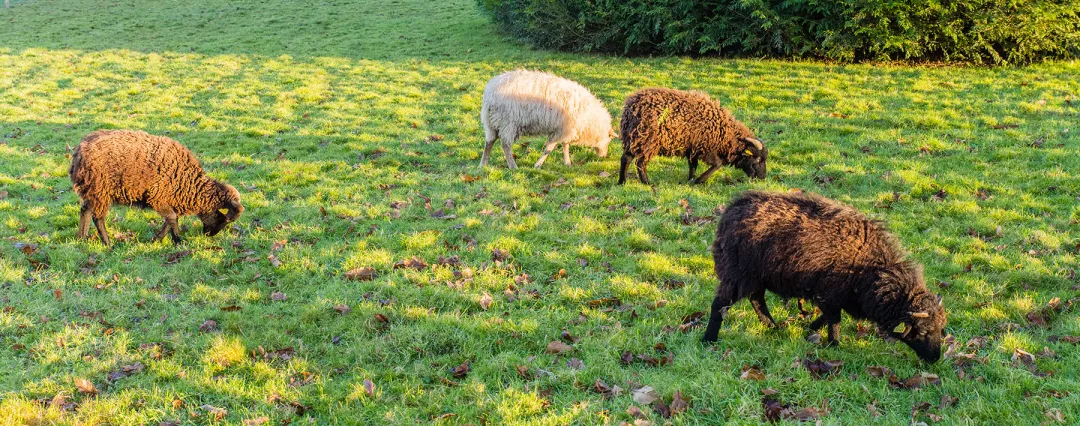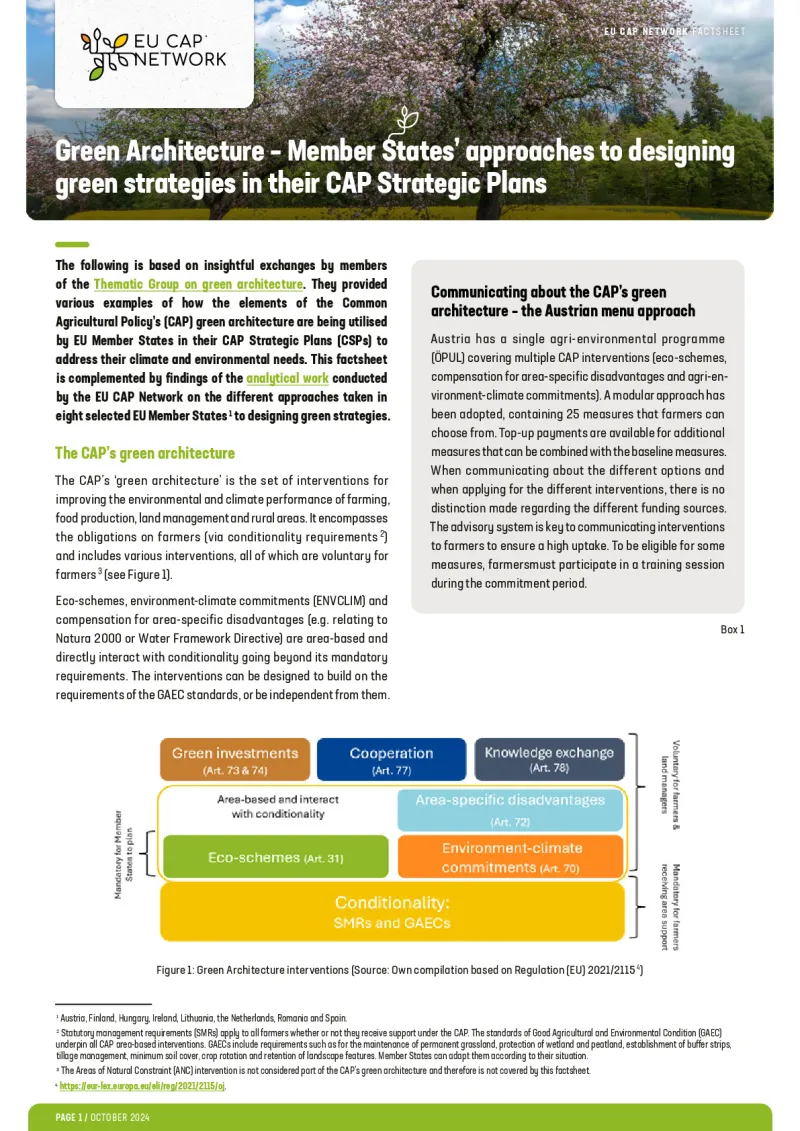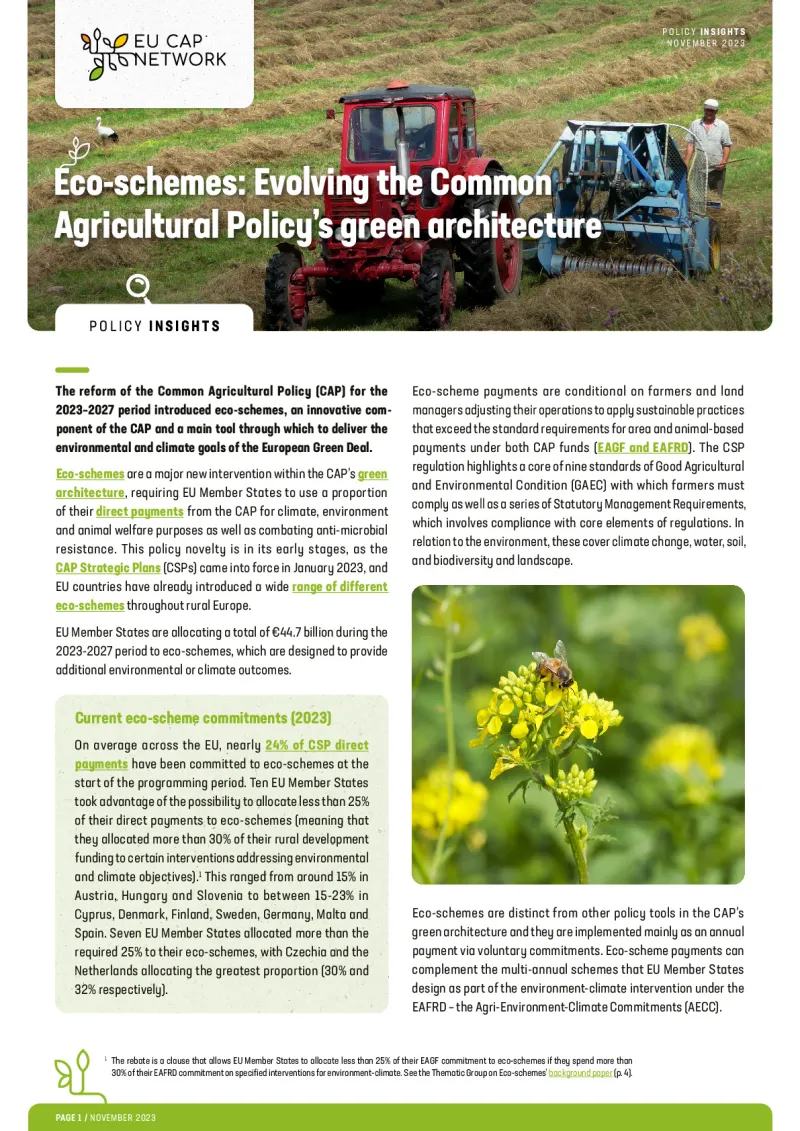The CAP’s green architecture – Member States’ strategies for addressing their climate and environmental needs
The Common Agricultural Policy (CAP) green architecture provides Member States with a toolbox for progressively abandoning unsustainable agricultural practices.

Page contents
The Common Agricultural Policy (CAP) plays an important role in improving the resilience of farming and adapting its practices to climatic and economic challenges. Its green architecture provides Member States with a toolbox for progressively abandoning unsustainable agricultural practices that continue to contribute to climate change and environmental degradation, which in turn undermine the farming and land management sectors’ resilience.

Agriculture and food production are essential for Europe’s food security, play a vital role for rural areas and their economies, and are essential to the provision of environmental and climate benefits. At the same time, agriculture is responsible for 13.1% of the EU’s greenhouse gas emissions (GHG). These GHG emissions mainly derive from livestock methane emissions, fertilisers, and manure as well as changes in land use. Agricultural intensification is one of the main causes of biodiversity loss and ecosystem degradation. While being one of the main drivers of environmental degradation, the agricultural sector is also one of the first sectors to suffer from the negative impact of climate change and biodiversity loss. Extreme weather events, such as droughts and flooding, may decrease yields and reduce farm income in the future.
For these reasons, an important objective of the 2023-27 CAP is to increase the environmental and climate ambition of CAP Strategic Plans (CSPs). In drafting their CSPs, Member States were also required to take into account the objectives and targets of key EU environmental and climate laws (and plans stemming from these), as listed in Annex XIII of Regulation (EU) 2021/2115 (CSP Regulation).
The CAP's "Green architecture"
Within the CAP there is a range of rules and tools that Member States can use to improve the environmental performance of farming, food production, land management, and rural areas. These are collectively known as the CAP’s “green architecture". They can be used in a variety of combinations by Member States to create a “green strategy” within the CSPs to deliver against their needs and priorities. The green architecture encompasses obligations on farmers (via conditionality requirements) as well as support provided via various interventions, all of which are voluntary for farmers and land managers (see Figure 1).

-
The diagram illustrates the interventions and their interactions forming part of the so-called green architecture within the Common Agricultural Policy (CAP).
Key Elements:
-
Conditionality:
• Foundational requirements that are mandatory for farmers receiving area-based support.
• Comprises statutory management requirements and good agricultural and environmental conditions.
All other interventions of the green architecture are voluntary for farmers and land managers. - Area-based interventions that interact with conditionality:
2.1. Eco-schemes (Article 31)
2.2. Environment-climate commitments (Article 70)
2.3. Area-specific disadvantages (Article 72)
- Eco-schemes and environment-climate commitments are mandatory for Member States to plan in their CAP Strategic Plans.
- Additional supporting measures:
3.1. Green Investments (Articles 73 and 74)
3.2. Cooperation (Article 77)
3.3. Knowledge exchange (Article 78)
-
Experiences from Member States
Member States’ choices on the interventions used and budget allocated depend on their climate and environmental needs, which vary depending on the local and regional context. Most Member States only use eco-schemes, environment and climate commitments, and green investments to a significant extent for environmental and climate purposes. Overall, the interventions for compensation for area-specific disadvantages, cooperation, and knowledge exchange are used much less by Member States to address their climate and environmental needs. In addition, some Member States, e.g. the Netherlands and Ireland, have made use of the cooperation intervention to support environmental outcomes.
Some Member States' CSPs have been criticised for not being ambitious enough in meeting the EU’s climate and environmental objectives. It is clear that “one size doesn't fit all”, but members of the recent EU CAP Network's Thematic Group on the green architecture (see box below) suggested that bottom-up initiatives involving farmers, the use of pilots to test scheme design, knowledge exchange, capacity building, and a functioning advisory system are crucial for a successful and effective implementation. These supporting measures may lead to better acceptance and uptake of other interventions. Ensuring communication on the essential role environmental action plays for the the long-term viability and resilience of farms is equally important for farmers as for other stakeholders (e.g. public administration, advisers, wider public). Providing a stable CAP framework that allows sufficient time to enable the development, launch, and implementation of schemes, as well as sufficient time for results to become evident, will also be key. This provides certainty for farmers, encouraging their involvement in long-term environmental commitments.

At the same time, looking ahead, Member States will also need to think about whether the green strategies taken for this CAP period are future-proof. They will need to think about how to adapt their CSPs to reflect future commitments, e.g. those arising from the forthcoming 2040 climate targets (due to be published by the European Commission in Spring 2025) and the national nature restoration plans (due to be produced by autumn 2026).
EU CAP Network activities on the green architecture
The EU CAP Network supports CAP stakeholders in making better use of the tools available within the CAP to address Member State’s climate and environmental needs. In two consecutive Thematic Groups, experts from a range of different stakeholder groups worked on recommendations and key messages to improve the design and implementation of eco-schemes and the green architecture. A recent analytical report provides examples of how green strategies are programmed in eight Member States using the six green architecture interventions.

The EU CAP Network Thematic Group on Enhancing Biodiversity on Farmland for Improved Resilience looked into possible ways of increasing habitat connectivity and fostering collaboration among farmers.



